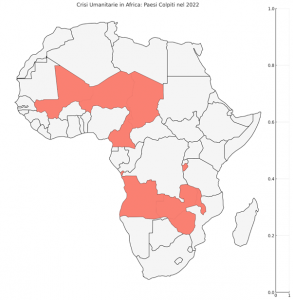
Beyond the Shadow: Responders Tackling Forgotten Humanitarian Crises in Africa
A Focus on Relief Efforts in Neglected Emergencies and the Challenges Faced
The Shadow of Neglected Emergencies in Africa
Humanitarian crises in Africa, often overlooked by global media, pose a significant challenge to relief workers. CARE International identified ten under-reported crises in 2022, including severe drought in Angola and a food crisis in Malawi, putting the lives of millions at risk. Despite their devastating impact, these crises receive little media attention, starkly contrasting with coverage of less critical events.
The Impact of the Ukraine War on Africa
The war in Ukraine has had global repercussions, worsening conditions across Africa. The surge in food and energy prices led to an unprecedented hunger crisis, with millions struggling to survive. Humanitarian organizations are called upon to respond to these emergencies, but the lack of international attention makes mobilizing necessary resources challenging.
The Crucial Role of Responders in Emergencies
In this scenario, responders play a vital role. Organizations like CARE and other relief groups work in extreme conditions to provide essential aid, such as food, water, and medical assistance. Beyond immediate response, these responders also engage in long-term reconstruction and strengthening community resilience. They face immense challenges, including resource scarcity, logistical difficulties, and the need for sustained support to significantly change the situation.

The areas highlighted in red, including Angola, Malawi, Central African Republic, Zambia, Chad, Burundi, Zimbabwe, Mali, Cameroon, and Niger, represent the regions most affected by crises ranging from extreme drought to severe food shortages. This map serves not only to highlight the geographical breadth of these emergencies but also to draw attention to the need for increased global awareness and action. The labels of the countries provide immediate reference, emphasizing the importance of urgent and coordinated intervention to address these critical situations.
The Need for Global Attention and Support for Relief Efforts
An effective response to these crises heavily relies on global attention and support. It’s crucial that media, politics, the economy, and civil society collaborate to raise awareness of these crises and mobilize resources. Joint efforts can make a difference, bringing lifesaving aid and creating a better future for those in affected regions. The international community must urgently act to support these efforts and ensure no humanitarian crisis remains in the shadows.



